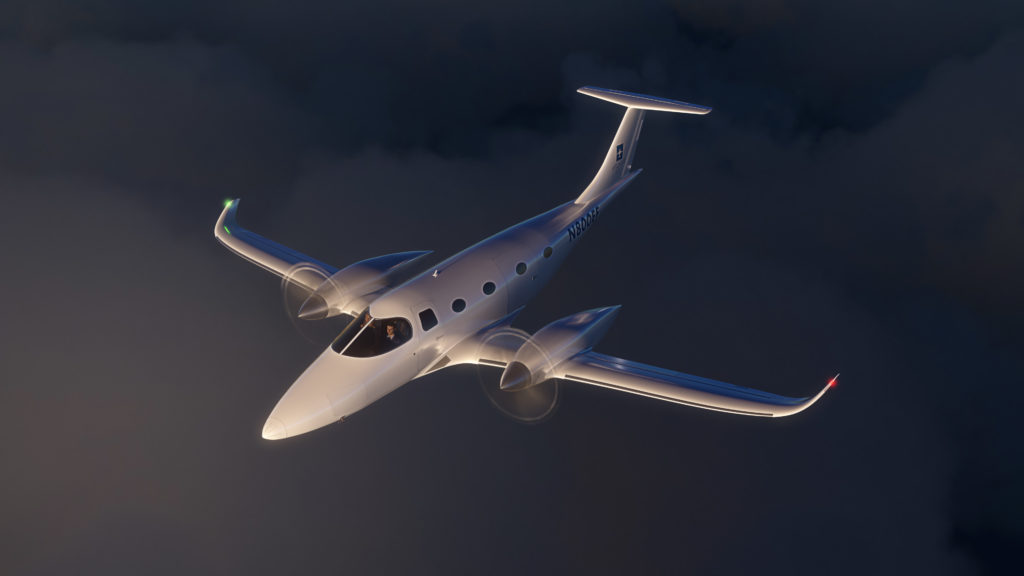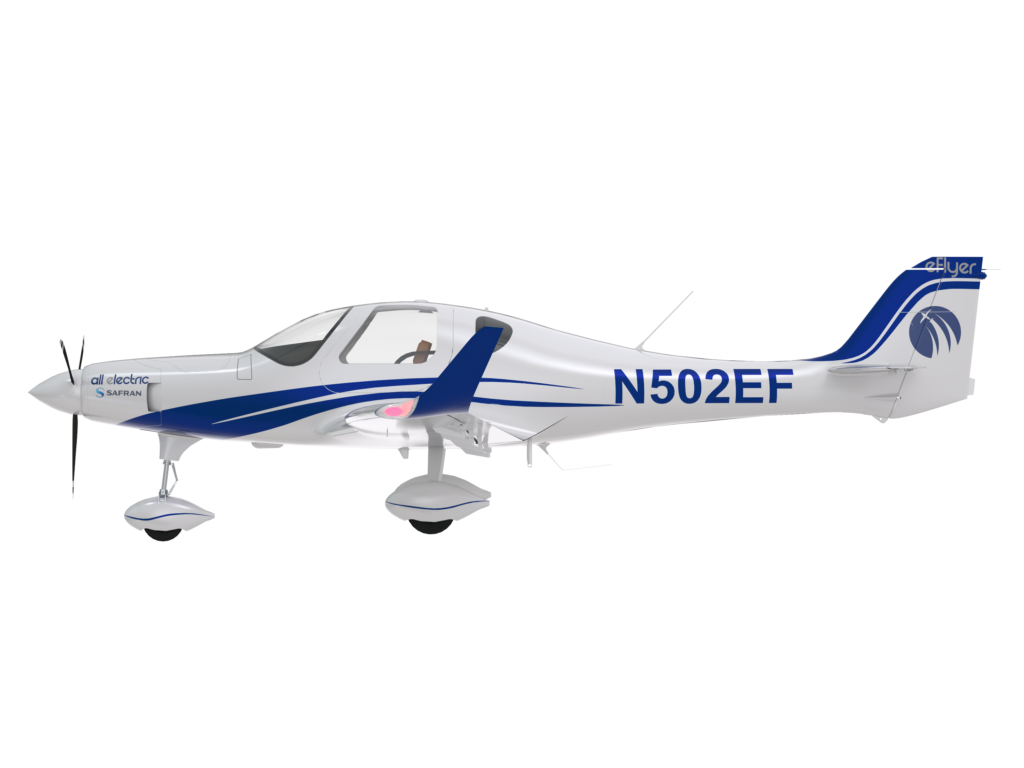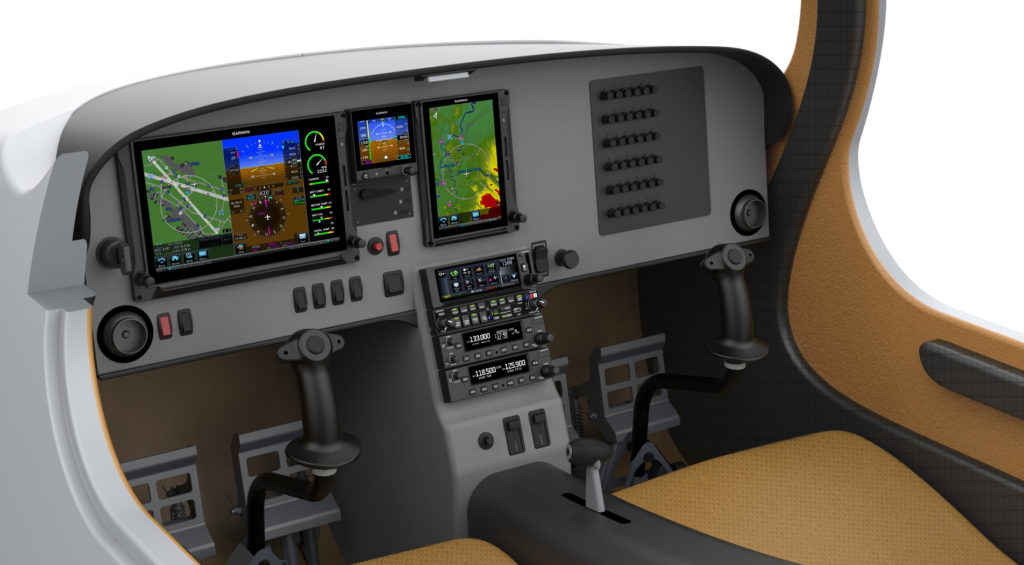Estimated reading time 11 minutes, 6 seconds.
The folks at Bye Aerospace in Englewood, Colorado, are keeping a keen eye on the supply chain.
As the aftershocks of Covid-19 manufacturing shutdowns continue to impact the availability of everything from building materials to washing machines, Bye Aerospace knows ready access to parts is the key to bringing its electric aircraft to market as quickly as possible.
Founded by George E. Bye, a former U.S. Air Force pilot, Bye Aerospace is a leader in the rapidly developing electric aircraft market. Currently, the company has three models in its eFlyer family and has been working on design, testing, and development since 2007.
The first model – and the one closest to production – is the eFlyer 2. Designed to replace legacy two-seat training aircraft that are decades old, the all-electric eFlyer 2 is currently undergoing FAA Part 23 certification.
Bye, who is CEO and chair of Bye Aerospace, told Skies that he hopes to see the eFlyer 2 certified and in production by the end of 2022, although he acknowledged that supply chain delays could push that into 2023.
“The eFlyer is purpose-built for primary training and is being certified in the normal category, with the full utility of a (Cessna) 172 or (Piper) Archer, or other normal category full spectrum pilot training aircraft,” he said. “Being all-electric, it has twice the aero efficiency of legacy models, with one-fifth of the operating costs.”
Bye said the eFlyer 2 will create disruptive change in a market where training costs remain a significant barrier for student pilots. Driving those costs down will be the key to ensuring a sustainable future supply of pilots. While fuel costs aren’t a factor with the eFlyer 2, Bye said maintenance costs are lower, too.
“An electric motor just has one moving part,” he explained. “They are rock solid, robust, they just don’t break.”
Bye Aerospace has partnered with some big names for the eFlyer 2, incorporating an electric propulsion system from Safran, a battery system from Moog, and Garmin’s G500 TXi avionics panel. Bye said the trainer will have a three-hour flight endurance with FAA VFR energy reserves and a 230-nautical-mile range. It will also be equipped with a whole-aircraft emergency parachute system.
“The normal training mission is one to 1.5 hours, so we are well equipped for training sorties,” said Bye.
The eFlyer 2 developmental prototype has flown for about four years, undergoing extensive testing and updates, including a new battery pack and a longer wing.
“We absolutely proved the paradigm of electric flight in terms of maintenance, speed, and efficiency,” noted Bye. “We validated the entire business model.”
Now, Bye Aerospace is transitioning into the production, or conformity, phase. Serial No. 1 , the first conformed production ship, will be the next flight test aircraft. Bye said the initial parts are now being delivered to the company’s R&D center in Denver, where the first three production aircraft will be built.
Just as the four-seat Cessna 172 offered a step up from the two-seat Cessna 150, Bye Aerospace’s eFlyer 4 will provide a more advanced training platform and applications in the air taxi and utility aircraft categories. Currently, the OEM says this model will be powered by a 200 kW (268-horsepower) all-electric engine, and will feature a 48-inch wide cabin and an 860-pound payload.
Bye said the four-seat eFlyer 4 is expected to certify and enter production about a year after its smaller predecessor.

Lastly, Bye Aerospace announced earlier this year that it plans to produce a larger aircraft targeted at the business and regional aviation market. The eFlyer 800 will be an eight-seat, twin-turboprop model expected to certify around 2025.
“We hit the core of aviation with training, then offered a four-seater for all of general aviation,” said Bye. “In the turboprop market where business is done, eight seats hits the center of that market. The economics of electric aviation are so disruptive that business cases that would otherwise not work are attractive. We could support smaller regional airlines with the eFlyer 800 and connect smaller communities. There may be some fun announcements coming up with regards to possible 800 markets, including air cargo and regional airlines.”
In July, Bye Aerospace announced that Denver-based leasing company Skye Aviation had completed deposits for 15 eFlyer 800s, while Germany’s Rheinland Air Service has five on order. The model’s launch customer will be Jet It and Jet Club, fractional owner sister companies in North America and Europe, respectively.
Bye told Skies that when equipped with standard options, the eFlyer 2 will likely be priced around US$500,000; the eFlyer 4 at $700,000; and the eFlyer 800 at $5.5 million.
Ramping up for production
The strong interest in the Bye Aerospace eFlyer family is supported by a healthy order backlog just shy of 800 total units.
Orders for the two-seat trainer represent about half of that total, with the remainder split between the eFlyer 4 and 800 models. Since it was announced in April of this year, more than 100 orders have been placed for the eFlyer 800.
“This is a remarkable production backlog and a great endorsement for the product,” said Bye. “The realization that the market is there for electric aircraft with these kinds of numbers is just amazing.”
With 55 staff members today, Bye Aerospace is making plans to add hundreds of employees once full production is reached. While “human scarcity” is a concern for industrial America, Bye said the OEM is “making a really cool product and that attracts workers who want to be associated with something world-changing. Thus far, we’ve been fortunate to attract the best in the industry.”

He alluded to a production facility announcement in the coming weeks, noting that details are being finalized now.
“The next challenge won’t just be the technology, but also the ramping up of production,” he said. “The scarcity of any single part is the lever of how quickly an aircraft can be produced. That’s why the full spectrum of the supply chain is of keen interest to us.”
As pent-up demand for travel returns, Bye said the aviation industry is running out of pilots. That fact, combined with electric aviation’s compelling operating economics, zero emissions, and noise, and Bye Aerospace’s progress with the FAA, have focused attention on the eFlyer family.
For Bye, who has been a champion of electric aviation since 2007, it’s been an exciting but challenging road.
“I have been a pioneer in this for over a decade now, but quite candidly, it’s not that easy,” he concluded. “Only recently have people embraced the idea of electric without substantial skepticism. The electric vehicle market has changed the view of many – it’s become more accepted across the spectrum of general and business aviation even in the last six months.
“There is a transition underway; politics has changed in the last few years. We now have noise concerns, environmental concerns, and electric aviation offers the right technology at the right time.”











Nice looking planes, but there is a battery challenge.
No battery, even theoretically, exists yet, to achieve the advertised plane performances.
Hydrogen could be the solution, and sooner the alternatives are considered, the better for the whole project.